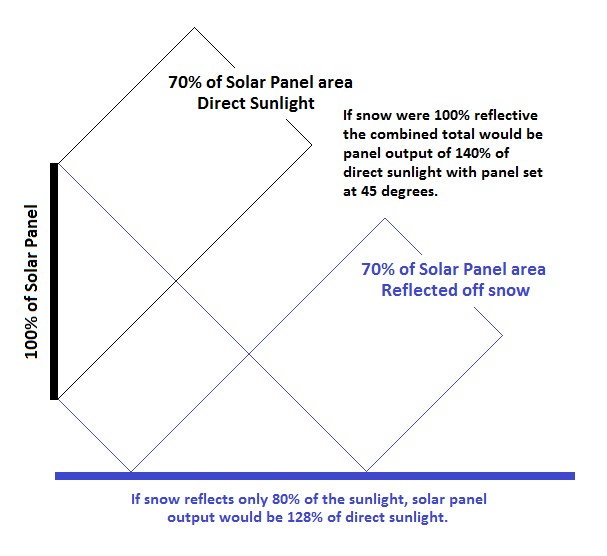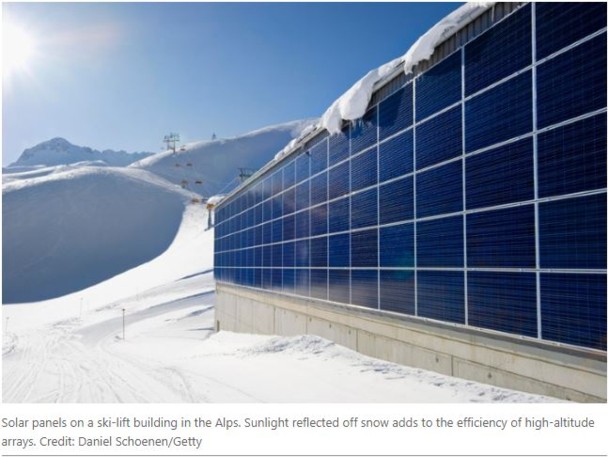While a superinsulated house may deal effectively with heat loss it does not solve the issue of energy needed for lighting, refrigeration, and other utilities. If you are located off-grid, or simply want to reduce dependence on outside sources you need to look to Solar Photovoltaic or wind. Personal experience in the northeast suggests that Solar Panels are more dependable than a wind generator, but your mileage may vary. During spring, summer, and fall the industry recommendations for mounting and alignment should be followed. However, during those periods of time when there is persistent snow cover personal experience has shown that a VERTICAL orientation of the solar panels is preferable. The most obvious reason for this is to prevent snow buildup. It takes very little snow on your solar panels to drop energy production to zero. But there is another VERY good reason. Snow reflects sunlight extremely well. If there is a more or less horizontal surface in front of your solar panels that extends out in front a distance at least equal to the height of your panels, and that surface is not shaded, you will increase panel output to a level above what you would receive if the panels were angled to face the sun directly. This takes you back to the initial mounting of your solar panels. Roof top mounting will NOT likely be the best choice. The panels should be mast or rack mounted so that panel angle may be adjusted from the optimal summer angle to vertical, and panels should not be a great distance off the ground.   |